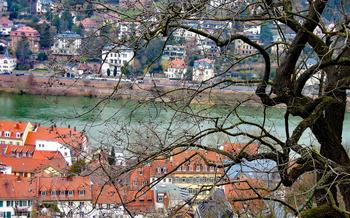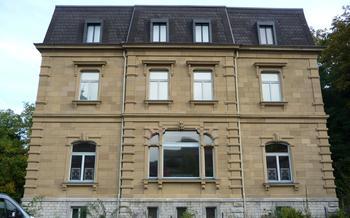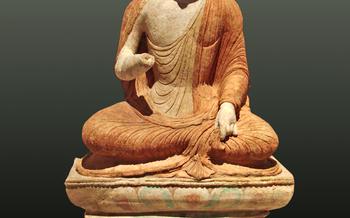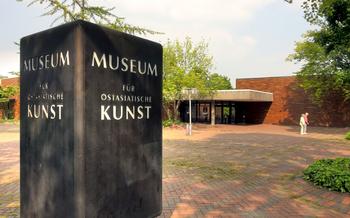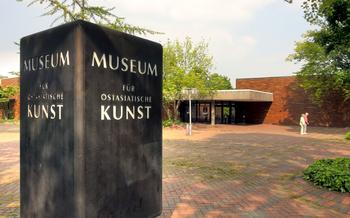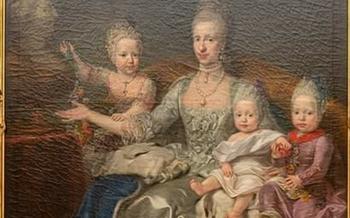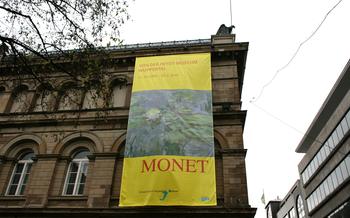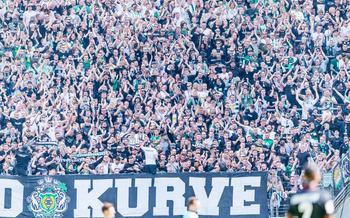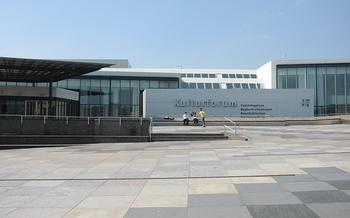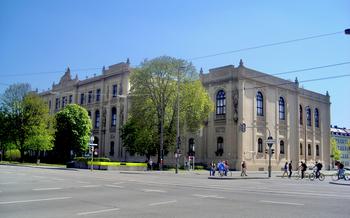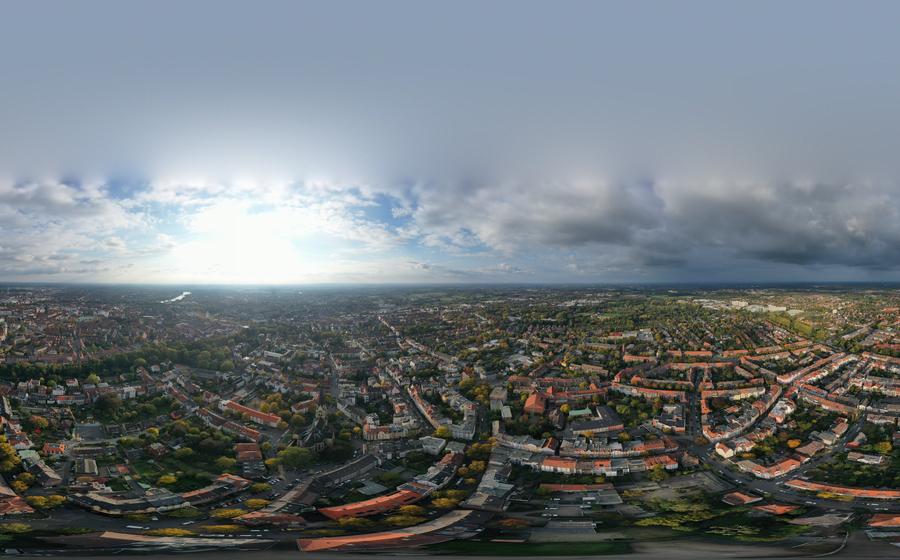
LWL Museum of Lacquer Art
- The LWL Museum of Lacquer Art: A Hidden Gem in Münster
- Lacquer Art: A Brief History
- Interactive Exhibits and Workshops
- Getting to the Museum
- Things to Do Nearby
- Insider Tip: Hidden Treasures
- The Museum Shop
- The Café
- Educational Programs
- Research and Conservation
- Temporary Exhibitions
- Insider Tip: Docent-Led Tours
The LWL Museum of Lacquer Art: A Hidden Gem in Münster
Nestled amidst the picturesque parklands of Münster, Germany, lies a hidden gem that celebrates the artistry and craftsmanship of lacquerware from around the world. The LWL Museum of Lacquer Art is a unique institution dedicated to preserving and showcasing the rich history and diverse traditions of this ancient art form. Founded in 1982, the museum has grown into a renowned center for lacquer art, attracting visitors and enthusiasts from across the globe. With its comprehensive collection, interactive exhibits, and educational programs, the LWL Museum of Lacquer Art offers a captivating journey into the world of this exquisite art form.
Lacquer Art: A Brief History
Lacquer art has its roots in East Asia, where it has been practiced for centuries. The earliest known examples of lacquerware date back to the Neolithic period in China, where craftsmen used natural resins from the sap of the lacquer tree to create waterproof coatings for various objects. Over time, lacquer art evolved into a highly refined and decorative technique, with artisans using multiple layers of lacquer to create intricate designs and patterns.
The development of lacquer art in Japan was influenced by Chinese techniques, but Japanese artisans eventually developed their own unique style, characterized by a more delicate and refined aesthetic. In Korea, lacquer art flourished during the Silla and Goryeo dynasties, with artisans creating exquisite lacquerware inlaid with mother-of-pearl and other materials.
In Europe, lacquer art was introduced by Portuguese and Dutch traders in the 16th century. European artisans were fascinated by the beauty and durability of lacquerware, and they began to experiment with their own techniques. Initially, European lacquerware was heavily influenced by Asian styles, but over time, European artisans developed their own unique approach, characterized by more elaborate and three-dimensional designs.
In the 20th century, lacquer art experienced a revival, with artists experimenting with new techniques and materials. Contemporary lacquer artists push the boundaries of the medium, creating works that are both innovative and visually stunning. Today, lacquer art is a global art form, with artists from all over the world creating works that reflect their unique cultural heritage and artistic vision.
Interactive Exhibits and Workshops
The LWL Museum of Lacquer Art offers a range of interactive exhibits and workshops that allow visitors to experience lacquer art firsthand. These hands-on activities are a great way to learn about the techniques and materials used in lacquer art, and to create your own lacquer artwork to take home.
The museum's workshops are suitable for all ages and skill levels. Beginners can learn the basics of lacquer art, while more experienced artists can explore advanced techniques. Workshops are led by experienced instructors who provide guidance and assistance throughout the process.
In the workshops, participants can create a variety of lacquer artworks, such as bowls, plates, jewelry, and decorative objects. They can choose from a range of colors and patterns to create unique and personalized pieces. The museum also offers workshops for children, where they can learn about lacquer art and create their own colorful and creative artworks.
The interactive exhibits at the museum provide visitors with a deeper understanding of the lacquer art process. Visitors can learn about the different techniques used to create lacquerware, and see how lacquer is applied and polished to achieve its characteristic glossy finish. They can also see examples of lacquerware from different periods and cultures, and learn about the history and evolution of lacquer art.
The LWL Museum of Lacquer Art's interactive exhibits and workshops are a great way to engage with lacquer art and learn more about this fascinating art form. Whether you are a beginner or an experienced artist, there is something for everyone at this unique museum.
Getting to the Museum
The LWL Museum of Lacquer Art is conveniently located in the heart of Münster, Germany, making it easily accessible by public transportation or car. To reach the museum by public transport, take bus line 14 or 15 from Münster's central train station (Hauptbahnhof) and get off at the "LWL-Museum für Lackkunst" stop. The museum is just a short walk from the bus stop.
For those arriving by car, there are several parking options available in the vicinity of the museum. Visitors can park in the underground car park at the museum itself, which offers ample parking spaces for a fee. Alternatively, there are several public parking lots and on-street parking options within walking distance of the museum.
Things to Do Nearby
Beyond the LWL Museum of Lacquer Art, Münster offers a wealth of cultural and historical attractions. The city is home to several other museums, including the Pablo Picasso Museum, which houses a significant collection of the artist's works, and the Museum of Zoology, which features a diverse range of animal specimens from around the world. For those interested in history, the Münster Cathedral, a stunning example of Gothic architecture, and the City Museum, which tells the story of Münster's rich past, are must-visits.
Strolling through the city center, visitors can admire the beautiful medieval architecture, with its narrow streets, gabled houses, and charming squares. Münster is also a shopper's paradise, with a wide variety of boutiques, art galleries, and antique shops. When it comes to dining, Münster offers a diverse culinary scene, from traditional German cuisine to international flavors. Whether you prefer fine dining or casual eateries, there is something to suit every taste.
For those looking for a day trip, the surrounding region offers a variety of options. The town of Osnabrück, with its well-preserved Old Town and historic castle, is just a short train ride away. Nature enthusiasts can explore the Teutoburg Forest, a beautiful natural area with hiking trails and stunning views. Alternatively, a visit to the historic city of Paderborn, with its impressive cathedral and medieval architecture, is sure to delight history buffs.
Insider Tip: Hidden Treasures
Beyond the main galleries, the LWL Museum of Lacquer Art holds secret treasures waiting to be discovered by curious visitors. In a hidden corner of the museum, tucked away from the main thoroughfares, lies a small room dedicated to experimental lacquer art. Here, visitors can encounter boundary-pushing works that challenge traditional notions of lacquerware. The museum also organizes off-the-beaten-path tours that take visitors behind the scenes, offering a glimpse into the museum's conservation studios and storage facilities. These tours provide a unique opportunity to see rare and seldom-displayed pieces, as well as learn about the fascinating stories behind their acquisition and preservation. For art enthusiasts, special events and lectures are regularly held at the museum, featuring renowned lacquer artists, scholars, and curators who share their insights and expertise on the history, techniques, and contemporary trends in lacquer art.
The Museum Shop
The LWL Museum of Lacquer Art's shop is a treasure trove for art enthusiasts and souvenir hunters alike. Here, you can find a unique selection of lacquerware and art-related gifts that are sure to delight and inspire. Browse the shelves for exquisite lacquerware pieces, from delicate jewelry and tableware to decorative objects and furniture. You'll also find a wide range of books, catalogs, and other publications on lacquer art, perfect for further exploration and learning.
Whether you're looking for a special gift for a loved one or a memento of your visit to the museum, the museum shop has something for everyone. Take home a piece of lacquer art to cherish for years to come, or simply browse the collection for inspiration and ideas.
The Café
After immersing yourself in the world of lacquer art, take a break and relax in the museum's charming café. Enjoy a refreshing beverage, a light snack, or a sweet treat while savoring the tranquil atmosphere. The café offers a delightful selection of pastries, cakes, sandwiches, and beverages, ensuring something to satisfy every palate.
During warmer months, step outside and bask in the sunshine on the café's outdoor terrace. Surrounded by the serene parkland, you can relish the picturesque views while enjoying your refreshments. Indulge in a moment of tranquility as you reflect on the artistic treasures you've encountered within the museum walls.
Educational Programs
The LWL Museum of Lacquer Art offers a wide range of educational programs for students of all ages. These programs aim to promote an understanding of lacquer art, its techniques, and its cultural significance. Workshops and classes are designed to engage students in hands-on experiences, allowing them to learn about the different stages of the lacquer process and create their own lacquer artworks.
The museum also collaborates with schools to develop outreach programs that bring lacquer art into the classroom. These programs provide students with the opportunity to explore the history and techniques of lacquer art through interactive lessons, demonstrations, and hands-on activities.
During school holidays, the museum offers summer camps and holiday programs that combine art, history, and fun. These programs are designed to provide children and teenagers with a unique and enriching experience while they learn about lacquer art and create their own masterpieces.
Research and Conservation
The LWL Museum of Lacquer Art is not only a place to admire exquisite works of art but also a center for research and conservation. The museum's dedicated team of conservators works tirelessly to preserve and restore the delicate lacquerware in the collection. They use state-of-the-art techniques and materials to ensure that these precious artifacts can be enjoyed by future generations.
The museum also collaborates with universities and institutions worldwide to conduct research on lacquer art. This research focuses on various aspects, including the history, techniques, and materials used in lacquer art. The museum's findings are published in academic journals and presented at conferences, contributing to the broader understanding and appreciation of this unique art form.
Temporary Exhibitions
The LWL Museum of Lacquer Art presents a dynamic program of temporary exhibitions that delve into specific themes and showcase the works of contemporary lacquer artists. These exhibitions offer visitors an opportunity to explore new perspectives on lacquer art and discover the latest trends in the field. Collaborations with other museums and galleries bring fresh ideas and diverse perspectives to the museum's programming. The temporary exhibitions are often accompanied by special events, lectures, and workshops, providing visitors with a deeper understanding of the featured artists and their work.
Insider Tip: Docent-Led Tours
For a truly immersive and enriching experience, be sure to take advantage of the docent-led tours offered by the LWL Museum of Lacquer Art. These tours are conducted by knowledgeable and passionate experts who will guide you through the collection, sharing insights into the history, techniques, and significance of the lacquerware on display. Listen to captivating stories and anecdotes about the artists, the objects, and the museum itself. Docent-led tours are an excellent way to gain a deeper understanding and appreciation for the art of lacquer.
